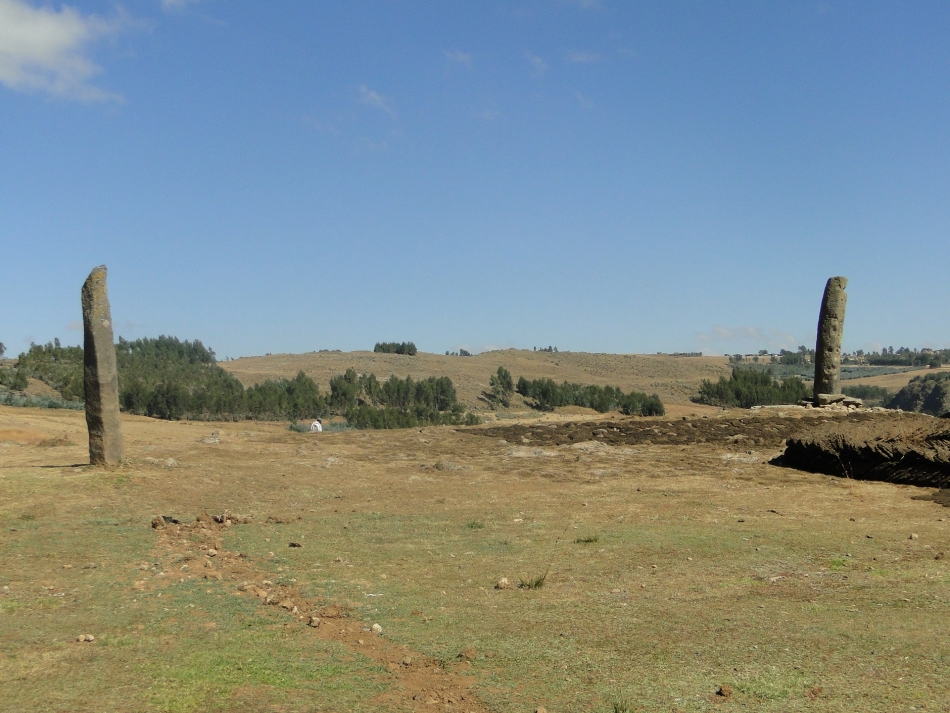The topography of the Central Highlands of Ethiopia is characterized by mountainous landscapes with alternating plateaus and gorges. Most of the megalithic sites recorded are positioned on the plateaus. However, there are also sites in the escarpment to the east that lie between the plateau and the Eastern Lowlands, which is connected with the Rift Valley. Data about the prehistory and early history of the Central Highlands of Ethiopia are rare. Despite the relative abundance of historical (mainly hagiographies and chronicles) and archaeological evidence, the medieval past is also far from complete, save for recent works on Christian, Muslim, or traditional-religious sites. Hence, it is still difficult to present ancient historical bases as a prelude in dealing with the medieval past of the area (Alebachew, 2020b). Based on existing historical and legendary hints, the history of the area is mostly traced from the late 13th century A.D., which is traditionally taken as a dividing line between ancient and medieval Ethiopia based on the politico-religious and demographic dynamics in the subsequent centuries (Taddesse Tamrat, 1972). However, there is no doubt that the aforementioned cultural and geographic dynamics did have their roots back in ancient times. In reference to the district of Menz, the core region of the Shay megalithic culture, it appears in ancient literature, when it was conquered by the Christian power and Christianity was underway around the 14th and 15th centuries. The first mention of Menz in the texts produced in the Christian kingdom was in the History of the wars of Amda Seyon, which recounts the victorious campaigns of this sovereign against Muslim sultanates in 1332 (Derat, 2012). The historical dynamics made the region to be the center of ethnic and cultural divergences. Understanding these dynamics enables us to reconstruct the socio-environmental and cultural practices during the medieval period to which the temporal framework of the Shay culture belongs.
Culturally, the region encompasses multi-ethnic, religious as well as linguistic configurations. Though the highland proper is more homogenous in ethnic, linguistic, and religious compositions, the Ifat area to the east has a long history of cultural dynamics. In spite of provisional findings presented in the recent Ph.D. thesis of Alebachew (2020b), whether these dynamics in the region had a connection with the preceding megalithic culture needs further inquiry. This will help to picture out the change and continuity in the cultural history of the area across periods. The people of the region have had different ways of livelihood ranging from farming to a semi-pastoralist way of life. The earliest phase of the Shay megalithic culture on the central highlands of Ethiopia needs further archaeological investigations, but from the research works conducted so far, it is clear that the culture was a pre-Christian tradition with a later contemporaneity with Christian and Muslim neighbors (Fauvelle & Poissonnier, 2016; Fauvelle 2020). There are no historical sources except the diverse local memory prevalent in the region in various forms, including festivals characterized by religious syncretism, i.e. pagan and Christian (Alebachew, 2020b). From the Ṭaṭar Gur and Ketetiya excavations and surface surveys conducted so far, burial goods which include ceramic and beads were uncovered. In this regard, a majority of the bead collections were found to be imported from the Indo-Pacific world (Fauvelle-Aymar & Poissonnier 2012; Fauvelle & Poissonnier, 2016).
(Alebachew Belay Birru, February 2023)

